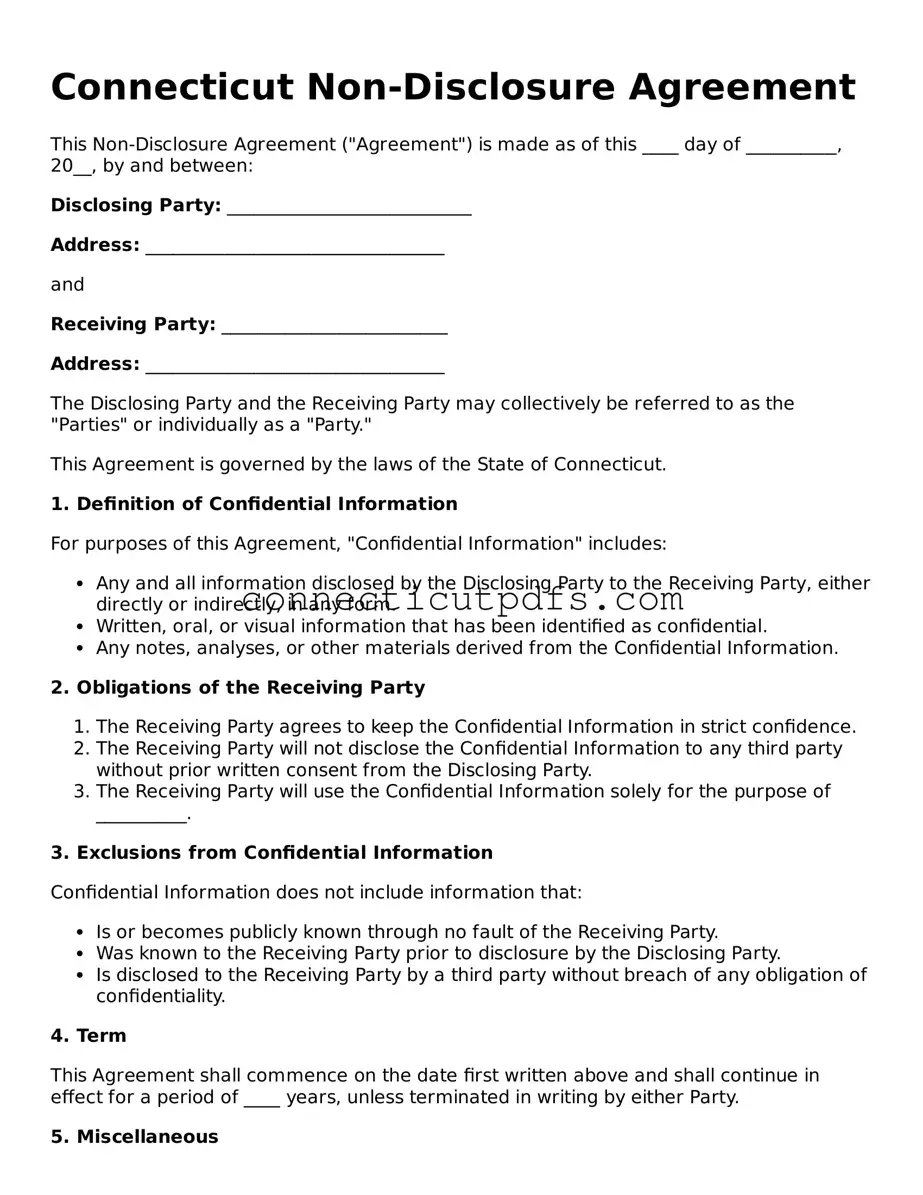Connecticut Non-Disclosure Agreement
This Non-Disclosure Agreement ("Agreement") is made as of this ____ day of __________, 20__, by and between:
Disclosing Party: ___________________________
Address: _________________________________
and
Receiving Party: _________________________
Address: _________________________________
The Disclosing Party and the Receiving Party may collectively be referred to as the "Parties" or individually as a "Party."
This Agreement is governed by the laws of the State of Connecticut.
1. Definition of Confidential Information
For purposes of this Agreement, "Confidential Information" includes:
- Any and all information disclosed by the Disclosing Party to the Receiving Party, either directly or indirectly, in any form.
- Written, oral, or visual information that has been identified as confidential.
- Any notes, analyses, or other materials derived from the Confidential Information.
2. Obligations of the Receiving Party
- The Receiving Party agrees to keep the Confidential Information in strict confidence.
- The Receiving Party will not disclose the Confidential Information to any third party without prior written consent from the Disclosing Party.
- The Receiving Party will use the Confidential Information solely for the purpose of __________.
3. Exclusions from Confidential Information
Confidential Information does not include information that:
- Is or becomes publicly known through no fault of the Receiving Party.
- Was known to the Receiving Party prior to disclosure by the Disclosing Party.
- Is disclosed to the Receiving Party by a third party without breach of any obligation of confidentiality.
4. Term
This Agreement shall commence on the date first written above and shall continue in effect for a period of ____ years, unless terminated in writing by either Party.
5. Miscellaneous
This Agreement constitutes the entire understanding between the Parties regarding the subject matter herein, superseding all prior agreements and representations.
IN WITNESS WHEREOF, the Parties have executed this Non-Disclosure Agreement as of the date first above written.
Disclosing Party Signature: ______________________________
Name: _______________________________________________
Date: _______________________________________________
Receiving Party Signature: _____________________________
Name: _______________________________________________
Date: _______________________________________________
